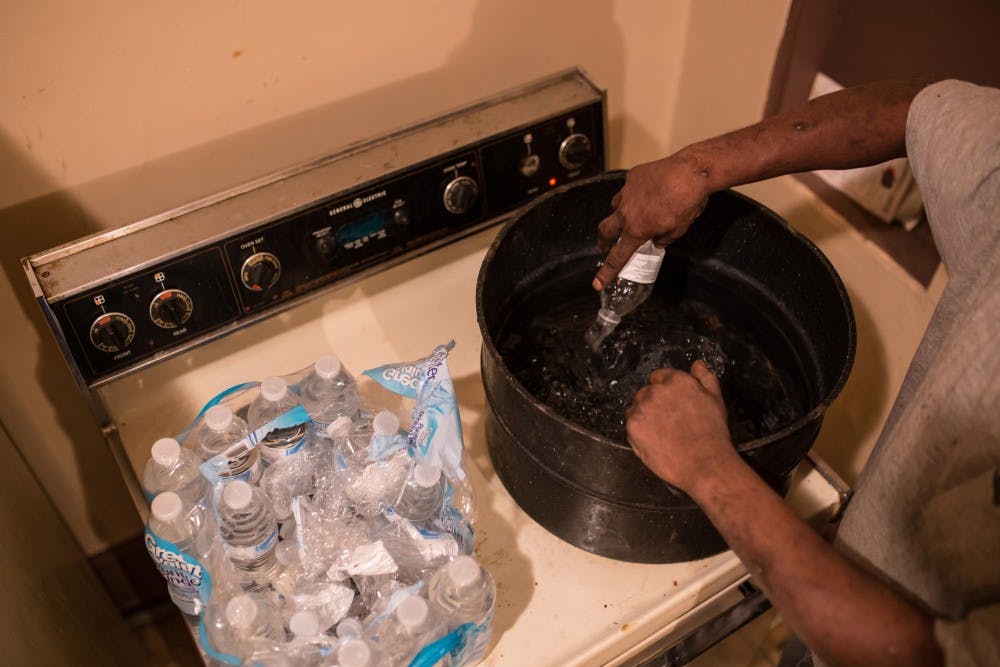As of today, the residents of Flint, Michigan have gone without clean water for over 1,000 days. Although this water crisis was declared a public health emergency in late 2015, it began in 2014 when the city changed its water source from the Detroit water supply to the Flint River in order to save money.
The water from this specific river ended up being 19 times more corrosive than the water from the original source, and it was not treated with the crucial chemicals to prevent corrosion, causing the pipelines to leak lead at unsafe levels.
Lead contamination is an incredibly serious issue. There is no known safe level of lead within the human body. According to the World Health Organization, “lead attacks the brain and central nervous system to cause coma, convulsions and even death,” especially in children. It also affects a child’s brain development and can cause a number of behavioral disorders.
In 2013 alone, lead contamination resulted in an estimated 853,000 deaths due to long-term effects on health according to the Institute for Health Metrics and Evaluation (IHME).
The water crisis made national news in early 2016 but died out of the news cycle soon after. Because of this, the people and water of Flint are increasingly forgotten about without solution.
After the city began distributing water filters to Flint residents, people assumed the crisis was being taken care of, however the filters didn’t actually work.
Organizations such as Convoy of Hope have donated hundreds of water bottles as another alternative, but the average family uses about 757 bottles worth of water a day. One Flint family was recorded using 151 bottles per day. When an average 24-pack of water bottles costs about $10, this can add up to between $60 to $315 per day.
That’s a high price to pay and is often too expensive for the citizens of Flint, where median household income is $24,862. But at the end of the day, the water is needed to survive. It’s needed to clean, cook, drink and bathe – everyday activities we usually don’t think twice about.
As recently as last December, Republicans in the U.S. House of Representatives closed the investigation of Flint’s water.
Republican Rep. Jason Chaffetz of Utah wrote that “The committee found significant problems at Michigan’s Department of Environmental Quality and unacceptable delays in the Environmental Protection Agency’s response to the crisis. The committee also found that the federal regulatory framework is so outdated that it sets up states to fail.”
Soon afterward, in early February, a federal judge dismissed a lawsuit – one of dozens – against Michigan Governor Rick Snyder and other state officials which requested damages under federal civil rights laws.
The Michigan government, and specifically its governor, are not being properly held accountable for their actions.
These type of things are happening right underneath our noses. If the Michigan government can get away with contaminating the water of its people for over two years to save a few bucks, then the Arizona government might be able to get away with it too. Before that happens, it’s important to know what’s going on.
“It affects (ASU students) in the capacity that it brings attention to infrastructure, and infrastructure affects everyone,” Ryan Cloughley, the president and co-founder of ASU’s Alliance for Democracy club and political science junior said.
With an abundance of construction consistently occurring on ASU campus, it is important to be aware of what is going on around you. In fact, it was reported that a dangerous amount of carcinogen was found in Phoenix, Glendale and other Valley locations' drinking water.
Student organizations such as the ASU's Undergraduate Student Government are on campus to help bridge that gap between you and not only the administration, but also local government. It is crucial that students get involved and begin working toward what they want to see, whether that involves clean water and stronger infrastructure or tuition hikes and fees.
It's also important to hold local representatives accountable and to pay attention to what bills are being proposed and how they will affect you. The Michigan government was able to switch water sources because not enough people were paying attention in the beginning.
As for Flint, there are still many ways you can help. For starters, keep talking about it. Don’t let these issues go unnoticed. Nothing will get done unless it is demanded. Donate to organizations such as Convoy of Hope and the Flint Water Fund. Give up one Starbucks cup and donate that extra $5 to the people of Flint who need it to survive.
If severe water contamination can happen somewhere in the U.S., it can happen anywhere in the U.S. Water is life, and it is our duty to preserve it.
Reach the reporter at simone.rossi@asu.edu or follow @simonekathleen9 on Twitter.
Editor’s note: The opinions presented in this column are the author’s and do not imply any endorsement from The State Press or its editors.
Want to join the conversation? Send an email to opiniondesk.statepress@gmail.com. Keep letters under 300 words and be sure to include your university affiliation. Anonymity will not be granted.
Like The State Press on Facebook and follow @statepress on Twitter.




